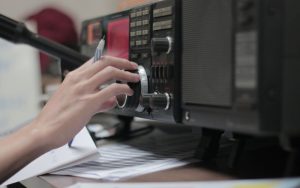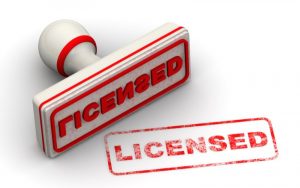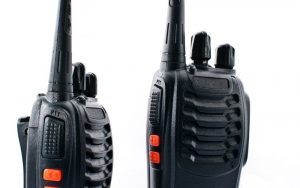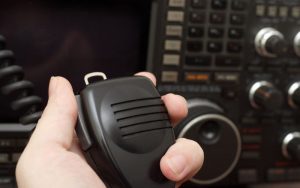Ham radios can be a fun hobby for anyone, and they can be a great way to stay connected during emergencies.
If you’re new to ham radios, it can be tough to know where to start.
When selecting your ham radio you’ll need to consider which radio bands you want to use and the types of operations that you would like to take part in whether home based or mobile. You’ll also need to consider budget and features. The range is wide and varied as are the costs.
The most appropriate ham radio for you will be easy to get to grips with and will possess all of the features that you need for the type of radio work that you need to do.
Xiegu G90 HF Radio
The Xiegu G90 HF Radio is a powerful and affordable transceiver that will get you on the air with high power, performance and reliability.
The G90 can transmit up to 20 watts of power on frequencies of 0.5-30MHz plus 60 meters SSB/CW/AM.
It has a bright 1.8 inch waterfall display screen that makes it easy to see what you are doing so you don’t have to strain your eyes to see the frequency or mode settings.
This feature packed rig also features an antenna tuner buil-tin SWR meter, IF shift, RIT and built in speaker.
The Xiegu G90 is a great choice for your first ham radio or portable rig.
Mirkit Waterproof Baofeng Radio UV-9R Plus
The MK1 UV-9R Plus is the latest version of the famous Baofeng UV-9R. It has a number of improvements over earlier models, including dual watch and dual reception.
The radio can be programmed by using a computer and the CHIRP software.
The MK1 UV-9R Plus also includes a flashlight on the side.
This model is IP67 certified for water resistance up to 1 metre for 30 minutes.
AnyTone AT-778UV Transceiver
The Anytone AT-778UV is a dual band, dual watch, tri-power transceiver with extended receive coverage.
It covers the 2m ham radio bands of 136–174 and 400–520 MHz (VHF/UHF) with up to 25W of power output on both bands.
The AT-778UV is also equipped with a high resolution LCD display, multi coloured backlit keypad and an easy to read frequency display.
TYT TH-9800D Plus Version Quad Band Cross-Band 50W
This is a powerful, easy to use and affordable mobile radio.
It has full 50W output power on all amateur bands.
The frequency range covers from 26-33MHz (AM mode) up to 450MHz (FM mode).
The radio has a wide band receive coverage of 108-180MHz, 320-512MHz and 750-950MHz (Air Band).
The display shows frequency in MHz or kHz with channel name or memory number if programmed.
The receiver sensitivity is very good even on the Air Bands.
This radio can be used as a base station or mobile transceiver.
It is a great value for money and is very popular among ham radio enthusiasts and hobbyists.
Yaesu Original FT-891 HF/50 MHz
The Yaesu FT-891 is a compact, lightweight HF/50MHz transceiver providing 100 watts of power output on the 160 to 6 metre bands.
This rig has a very nice appearance and an easy to use front panel layout.
The FT-891 includes many advanced features such as: dual receive, VFO A/B, CTCSS tones and DTMF decoder.
The new IF filter design improves selectivity greatly over previous models.
This radio can be used with any type of antenna including verticals or dipoles.
A great radio for any ham radio enthusiast.
Buyer’s guide to choosing the best ham radio for beginners
As mentioned above, there are many different ham radios to choose from.
It’s important to do a little bit of research before you commit to buying one so that you don’t buy the wrong one for your needs.
One important factor to consider when buying a ham radio is the power output (in watts). Some radios have either low or high power settings and some may even have adjustable power settings where you can go up and down in small steps depending on your needs.
This is where it’s useful to know what you will be using the radio for.
For instance, if you are on a budget and only want to use the radio at home and you have a good quality antenna system then working on lower power levels will provide you with good results – you don’t need a super powerful radio as the antenna will compensate for the lower power.
However, if you plan to take the radio with you when camping or hiking it might be a better idea to go for a more powerful radio simply because you will be limited with the arrangements that you can make for an antenna.
Having access to more power when mobile such as when camping will enable you to stay in touch with people more easily.
Operating bands
Ham radios operate across different bands or frequencies and when choosing a radio you’ll need to select one that works on the bands that you wish to work.
If you wish to work on the HF bands, which provide long distance communication then you’ll need a radio that provides this ability.
Likewise for VHF and UHF operation you should select a radio that will work on these bands.
The ARRL ( in the USA ) provide a full list of the various amateur bands that are available for use by American operators and you can find this list on the ARRL website here.
In the UK the RSGB publish band plans and you can find the bands listed on their website here.
You will also need to consider any restrictions that your ham radio licence has such as levels of power, the bands that you are allowed to use and the forms of transmission that are allowed, as well as any other requirements that you need to fulfil.
Build quality
If you plan on using your radio in different locations maybe as a mobile operator then you’ll need a set that is robust.
Thankfully most radios are sturdy and allow for transportation but, to ensure the best experience for yourself with minimal risk of problems, for mobile use select a radio that is designed for this rather than a base station type setup which could be more prone to damage.
Display
Many ham radios now feature a ‘waterfall’ display which is a visible indication of the signals that your radio is receiving.
This may seem like a gimmick but, in practice it is actually very useful and helpful, allowing you to visibly tune your set to the different signals that you are receiving.
The waterfall feature can often be adjusted to remove the weaker signals.
It’s certainly an option that I would recommend looking for when considering your radio.
Size
The size of the set may be something that you need to think about.
Base station type sets will typically be larger than mobile and portable radios and, if space is at a premium then this type of station may be unsuitable for your needs.
Many operators use a mobile station at home connected to a 12 volt power supply which reduces the amount of space required and also provides the added option of being able to take the radio out for mobile use – such as in the car or even in a rucksack with a battery pack.
Cost
You don’t need to spend an arm and a leg to get on the air.
If you are happy to explore the 2m and 70cm ham bands then you can easily obtain a low cost portable hand held radio that will provide about 4 watts or so of power.
With a little creativity you can easily construct an antenna that will greatly improve the performance of one of these handhelds.
Using 5 wire coat hangers and a soldering iron it is easy to put together a simple antenna which, if you can mount on a pole or hang from a tree will give some surprising results.
You can see how to make one here on Youtube.
Final Words
There are many different ham radios out there to choose from so finding the right one for you can be a little bit of a challenge.
It’s important to do your research first so that you know what it is exactly that you need.
Ham radio has become very popular in recent years partly due to technological advancements and having more affordable equipment and I hope that this article has been useful in helping you to find your next ham radio.
Read Next
- Can ham radio survive EMP?
- Why do you need a ham radio license?
- What is 2m ham radio?
- What’s better ham radio or CB radio?
- Is morse code still useful?
- What does QRP mean in ham radio?










